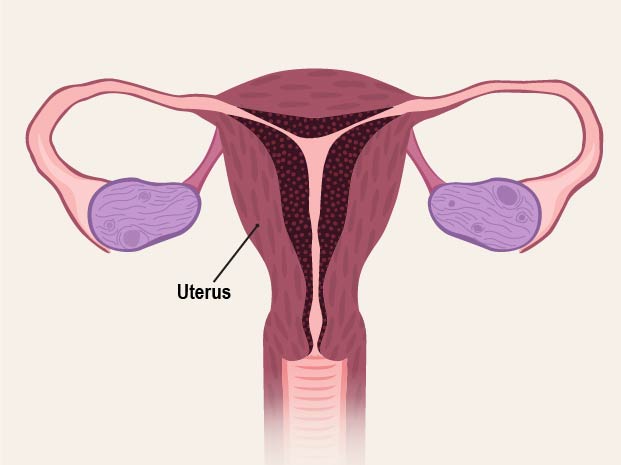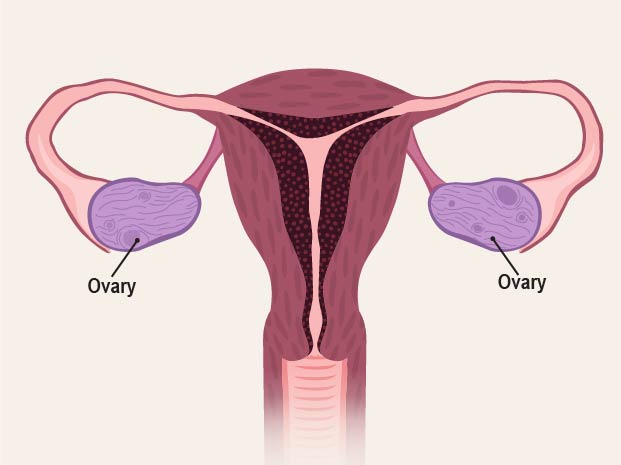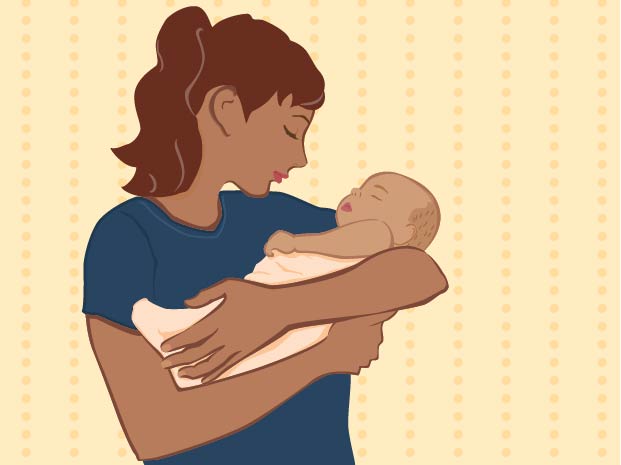- Home
- Parents Home
- Allergy Center
- Asthma Center
- Cancer Center
- Diabetes Center
- A to Z Dictionary
- Emotions & Behavior
- First Aid & Safety
- Food Allergy Center
- General Health
- Growth & Development
- Flu Center
- Heart Health
- Homework Help Center
- Infections
- Diseases & Conditions
- Nutrition & Fitness Center
- Play & Learn Center
- School & Family Life
- Pregnancy Center
- Newborn Center
- Q&A
- Recipes
- Sports Medicine Center
- Doctors & Hospitals
- Videos
- Para Padres
- Home
- Kids Home
- Asthma Center
- Cancer Center
- Movies & More
- Diabetes Center
- Getting Help
- Feelings
- Puberty & Growing Up
- Health Problems of Grown-Ups
- Health Problems
- Homework Center
- How the Body Works
- Illnesses & Injuries
- Nutrition & Fitness Center
- Recipes & Cooking
- Staying Healthy
- Stay Safe Center
- Relax & Unwind Center
- Q&A
- Heart Center
- Videos
- Staying Safe
- Kids' Medical Dictionary
- Para Niños
- Home
- Teens Home
- Asthma Center
- Be Your Best Self Center
- Cancer Center
- Diabetes Center
- Diseases & Conditions
- Drugs & Alcohol
- Expert Answers (Q&A)
- Flu Center
- Homework Help Center
- Infections
- Managing Your Medical Care
- Managing Your Weight
- Nutrition & Fitness Center
- Recipes
- Safety & First Aid
- School & Work
- Sexual Health
- Sports Center
- Stress & Coping Center
- Videos
- Your Body
- Your Mind
- Para Adolescentes
Female Reproductive System
What Is Reproduction?
Reproduction is the process by which organisms make more organisms like themselves. But even though the reproductive system is essential to keeping a species alive, unlike other body systems, it's not essential to keeping an individual alive.
In the human reproductive process, two kinds of sex cells, or gametes (GAH-meetz), are involved. The male gamete, or sperm, and the female gamete, the egg or ovum, meet in the female's reproductive system. When sperm fertilizes (meets) an egg, this fertilized egg is called a zygote (pronounced: ZYE-goat). The zygote goes through a process of becoming an embryo and developing into a fetus.
The male reproductive system and the female reproductive system both are needed for reproduction.
Humans, like other organisms, pass some characteristics of themselves to the next generation. We do this through our genes, the special carriers of human traits. The genes that parents pass along are what make their children similar to others in their family, but also what make each child unique. These genes come from the male's sperm and the female's egg.

The Female Reproductive System
Like other living things, human beings reproduce. It's what keeps the population going.
In humans, this happens when the male and female reproductive systems work together to make a baby.

The Female Reproductive System
The female reproductive system includes a group of organs in a woman's lower belly and pelvis.

The Female Reproductive System
It's called the reproductive system because it supports the development and growth of a baby.

The Female Reproductive System
This system is also responsible for a girl's monthly period, called menstruation.

The Female Reproductive System
The female reproductive system has several parts. The uterus is where a fetus, or baby, grows. It is a hollow, pear‑shaped organ with a muscular wall.

The Female Reproductive System
There are two ovaries, one on either side of the uterus. Ovaries make eggs and hormones like estrogen and progesterone. These hormones help girls develop, and make it possible for a woman to have a baby.
The ovaries release an egg as part of a woman's cycle. When an egg is released, it's called ovulation. Each egg is tiny – about one‑tenth the size of a poppy seed.

The Female Reproductive System
Fallopian tubes go from the uterus to the ovaries. During ovulation, an ovary releases an egg into the fallopian tube next to it.

The Female Reproductive System
The cervix is the lower part of the uterus that opens into the vagina. During childbirth, the cervix expands about 4 inches (10 centimeters) so the baby can travel from the uterus through the vagina and into the world.

The Female Reproductive System
The vagina is a tube that connects the uterus to the outside of the body. The entrance to the vagina is on the outside of the body. It's called the vaginal opening.

The Female Reproductive System
The vaginal opening is a hole between a woman's legs, below her urethra (where pee comes out) and above her anus (where poop comes out). Here you can see how the vagina connects to the uterus.

The Female Reproductive System
During sex, sperm cells travel through the vagina to the uterus and fallopian tubes.
In the fallopian tube, the sperm meets the egg that was released from the ovary during ovulation.

The Female Reproductive System
If a sperm cell fertilizes the woman's egg, it's the first step in reproduction (getting pregnant).

The Female Reproductive System
If all goes well, in 9 months, a baby will be born.
What Is the Female Reproductive System?
The external part of the female reproductive organs is called the vulva, which means covering. Located between the legs, the vulva covers the opening to the vagina and other reproductive organs inside the body.
The fleshy area located just above the top of the vaginal opening is called the mons pubis. Two pairs of skin flaps called the labia (which means lips) surround the vaginal opening. The clitoris, a small sensory organ, is located toward the front of the vulva where the folds of the labia join. Between the labia are openings to the urethra (the canal that carries pee from the bladder to the outside of the body) and vagina. When girls become sexually mature, the outer labia and the mons pubis are covered by pubic hair.
A female's internal reproductive organs are the vagina, uterus, fallopian tubes, and ovaries.
The vagina is a muscular, hollow tube that extends from the vaginal opening to the uterus. Because it has muscular walls, the vagina can expand and contract. This ability to become wider or narrower allows the vagina to accommodate something as slim as a tampon and as wide as a baby. The vagina's muscular walls are lined with mucous membranes, which keep it protected and moist.
The vagina serves three purposes:
- It's where the penis is inserted during sexual intercourse.
- It's the pathway (the birth canal) through which a baby leaves a woman's body during childbirth.
- It's the route through which menstrual blood leaves the body during periods.
A very thin piece of skin-like tissue called the hymen partly covers the opening of the vagina. Hymens are often different from female to female. Most women find their hymens have stretched or torn after their first sexual experience, and the hymen may bleed a little (this usually causes little, if any, pain). Some women who have had sex don't have much of a change in their hymens, though. And some women's hymens have already stretched even before they have sex.
The vagina connects with the uterus, or womb, at the cervix (which means neck). The cervix has strong, thick walls. The opening of the cervix is very small (no wider than a straw), which is why a tampon can never get lost inside a girl's body. During childbirth, the cervix can expand to allow a baby to pass.
The uterus is shaped like an upside-down pear, with a thick lining and muscular walls — in fact, the uterus contains some of the strongest muscles in the female body. These muscles are able to expand and contract to accommodate a growing fetus and then help push the baby out during labor. When a woman isn't pregnant, the uterus is only about 3 inches (7.5 centimeters) long and 2 inches (5 centimeters) wide.
At the upper corners of the uterus, the fallopian tubes connect the uterus to the ovaries. The ovaries are two oval-shaped organs that lie to the upper right and left of the uterus. They produce, store, and release eggs into the fallopian tubes in the process called ovulation (pronounced: av-yoo-LAY-shun).
There are two fallopian (pronounced: fuh-LO-pee-un) tubes, each attached to a side of the uterus. Within each tube is a tiny passageway no wider than a sewing needle. At the other end of each fallopian tube is a fringed area that looks like a funnel. This fringed area wraps around the ovary but doesn't completely attach to it. When an egg pops out of an ovary, it enters the fallopian tube. Once the egg is in the fallopian tube, tiny hairs in the tube's lining help push it down the narrow passageway toward the uterus.
The ovaries (pronounced: OH-vuh-reez) are also part of the endocrine system because they produce female sex such as estrogen (pronounced: ESS-truh-jun) and progesterone (pronounced: pro-JESS-tuh-rone).
How Does the Female Reproductive System Work?
The female reproductive system enables a woman to:
- produce eggs (ova)
- have sexual intercourse
- protect and nourish a fertilized egg until it is fully developed
- give birth
Sexual reproduction couldn't happen without the sexual organs called the gonads. Most people think of the gonads as the male testicles. But both sexes have gonads: In females the gonads are the ovaries, which make female gametes (eggs). The male gonads make male gametes (sperm).
When a baby girl is born, her ovaries contain hundreds of thousands of eggs, which remain inactive until puberty begins. At puberty, the pituitary gland (in the central part of the brain) starts making hormones that stimulate the ovaries to make female sex hormones, including estrogen. The secretion of these hormones causes a girl to develop into a sexually mature woman.
Toward the end of puberty, girls begin to release eggs as part of a monthly period called the menstrual cycle. About once a month, during ovulation, an ovary sends a tiny egg into one of the fallopian tubes.
Unless the egg is fertilized by a sperm while in the fallopian tube, the egg leaves the body about 2 weeks later through the uterus — this is menstruation. Blood and tissues from the inner lining of the uterus combine to form the menstrual flow, which in most girls lasts from 3 to 5 days. A girl's first period is called menarche (pronounced: MEH-nar-kee).
It's common for women and girls to have some discomfort in the days leading to their periods. Premenstrual syndrome (PMS) includes both physical and emotional symptoms that many girls and women get right before their periods, such as:
- acne
- bloating
- tiredness
- backaches
- sore breasts
- headaches
- constipation
- diarrhea
- food cravings
- depression
- irritability
- trouble concentrating or handling stress
PMS is usually at its worst during the 7 days before a girl's period starts and disappears after it begins.
Many girls also have belly cramps during the first few days of their periods caused by prostaglandins, chemicals in the body that make the smooth muscle in the uterus contract. These involuntary contractions can be dull or sharp and intense.
It can take up to 2 years from menarche for a girl's body to develop a regular menstrual cycle. During that time, her body is adjusting to the hormones puberty brings. On average, the monthly cycle for an adult woman is 28 days, but the range is from 23 to 35 days.
What Happens If an Egg Is Fertilized?
If a female and male have sex within several days of the female's ovulation, fertilization can happen. When the male ejaculates (when semen leaves the penis), a small amount of semen is deposited into the vagina. Millions of sperm are in this small amount of semen, and they "swim" up from the vagina through the cervix and uterus to meet the egg in the fallopian tube. It takes only one sperm to fertilize the egg.
About 5 to 6 days after the sperm fertilizes the egg, the fertilized egg (pronounced: zygote) has become a multicelled blastocyst. A blastocyst (pronounced: BLAS-tuh-sist) is about the size of a pinhead, and it's a hollow ball of cells with fluid inside. The blastocyst burrows itself into the lining of the uterus, called the endometrium. The hormone estrogen causes the endometrium (pronounced: en-doh-MEE-tree-um) to become thick and rich with blood. Progesterone, another hormone released by the ovaries, keeps the endometrium thick with blood so that the blastocyst can attach to the uterus and absorb nutrients from it. This process is called implantation.
As cells from the blastocyst take in nourishment, another stage of development begins. In the embryonic stage, the inner cells form a flattened circular shape called the embryonic disk, which will develop into a baby. The outer cells become thin membranes that form around the baby. The cells multiply thousands of times and move to new positions to eventually become the embryo (pronounced: EM-bree-oh).
After about 8 weeks, the embryo is about the size of a raspberry, but almost all of its parts — the brain and nerves, the heart and blood, the stomach and intestines, and the muscles and skin — have formed.
During the fetal stage, which lasts from 9 weeks after fertilization to birth, development continues as cells multiply, move, and change. The fetus (pronounced: FEE-tis) floats in amniotic (pronounced: am-nee-AH-tik) fluid inside the amniotic sac. The fetus gets oxygen and nourishment from the mother's blood via the placenta (pronounced: pluh-SEN-tuh). This disk-like structure sticks to the inner lining of the uterus and connects to the fetus via the umbilical (pronounced: um-BIL-ih-kul) cord. The amniotic fluid and membrane cushion the fetus against bumps and jolts to the mother's body.
Pregnancy lasts an average of 280 days — about 9 months. When the baby is ready for birth, its head presses on the cervix, which begins to relax and widen to get ready for the baby to pass into and through the vagina. Mucus has formed a plug in the cervix, which now loosesn. It and amniotic fluid come out through the vagina when the mother's water breaks.
When the contractions of labor begin, the walls of the uterus contract as they are stimulated by the pituitary hormone oxytocin (pronounced: ahk-see-TOE-sin). The contractions cause the cervix to widen and begin to open. After several hours of this widening, the cervix is dilated (opened) enough for the baby to come through. The baby is pushed out of the uterus, through the cervix, and along the birth canal. The baby's head usually comes first. The umbilical cord comes out with the baby. It's clamped and cut close to the navel after the baby is delivered.
The last stage of the birth process involves the delivery of the placenta, which at that point is called the afterbirth. After it has separated from the inner lining of the uterus, contractions of the uterus push it out, along with its membranes and fluids.

© 1995- The Nemours Foundation. KidsHealth® is a registered trademark of The Nemours Foundation. All rights reserved.
Images sourced by The Nemours Foundation and Getty Images.
Humana Healthy Horizons in Ohio
- Humana Healthy Horizons
- Humana Healthy Horizons Extras
- Member Support
- Care management
- Caregiver resources
- Child well-being
- Disease management
- Documents and forms
- Enrollment
- Grievances and appeals
- Health and wellness
- KidsHealth
- Member Handbook
- New Member Resources
- News and alerts
- OhioRISE Plan
- Pregnancy outcomes
- Tobacco cessation
- Why Humana
- Your primary care provider
- For Providers
- Contact us
- Accessibility
- Humana Healthy Horizons
- Humana Healthy Horizons Extras
- Member Support
- Care management
- Caregiver resources
- Child well-being
- Disease management
- Documents and forms
- Enrollment
- Grievances and appeals
- Health and wellness
- KidsHealth
- Member Handbook
- New Member Resources
- News and alerts
- OhioRISE Plan
- Pregnancy outcomes
- Tobacco cessation
- Why Humana
- Your primary care provider
- For Providers
- Contact us
- Accessibility